Leaderboard
Popular Content
Showing content with the highest reputation on 01/02/20 in all areas
-
This is Eduard's Nieuport XI depicted as one of French ace Jean Navarre's mounts. Unfortunately this wasn't an option provided by Eduard hence the missing 6 from the serial number. The build itself was fine but on the painting side I found applying the edging tapes a bit tedious and feel I could have made a better job of them.32 points
-
Hi folks. ICM's 1/72 Polikarpov I-153 'Chaika' ('Gull') has been a snack between main modelling meals. 'Red 20' is one of the box options. The book by Erik Pilawski, 'Soviet Air Force Fighter Colours, 1941-1945', advised that Russian aluminium dope was a finish with 'highly reflective properties' that was applied all over, so I went with that, although Troy's comments below are welcome as ever, in appreciating that all that glisters... Having forgotten to prep for rigging before the top wing went on resulted in the necessity to innovate a little, so the modern convenience of elastic was married to the old fishing line and eyelet method to create removable / replaceable rigging. The principle is illustrated above modelled over scale, so it can be seen easily. Each rigging 'run' was measured and a piece of elastic cut about 1cm short. Both ends were inserted into pieces of brass micro tube and short sections of wire into each extremity and CA'd in place. The wire was bent into a hook to complete. With wire eyelets CA'd at the appropriate anchor points it was easy to hook each line up to complete the rigging. The 'hook and loop' system is convenient as it's assembled 'off model' until ready to install. It's a methodology that sits alongside other rigging techniques and which particularly suits tight, relatively inaccessible areas. TTFN Steve28 points
-
Hi everyone. My latest work, finished it at the end of last year, it's taken a while to do the photo's. It's built as one of the options out of the box. I added Neomega seats, Brassin wheels and AIM 9L Sidewinders. I just had the usual fight to get the intakes to align, same as everyone reports for this kit. Painted with a mixture of Tamiya and Xtracrylix paints. All comments welcome. Rob.27 points
-
Hi all, I managed to get some slightly better shots of the finished article today. The WIP thread, for anyone wishing to peruse, is located here. As you will see from the WIP, there were a number of challenges along the way with this one, many of them foolishly self-imposed! Still, the result has scrubbed up reasonably well; not perfect, I readily admit, but at least it fits in my display cabinet - just! Here's a few photos of the result: All comments and criticisms gratefully received, of course.26 points
-
Just finished the Horsa from Italeri. Fit was pretty good on the major parts but other parts like the landing gear had no locating marks so it was off to the photos, and Italeri would have you put the aileron mass balances on backwards. RC 56 glue for the windows worked well. Paint is Tamiya dark earth and dark green, Model Master for the flat black and the white. The decals from 3 kits were a complete mess so some are from spares and others are from a laser printer. The nose wheel was lengthened with brass tubing and music wire. With the Airfix C-47 (as a C-53), Italeri 1/72 CG-4A, and Airlines/Frog Hotspur Horsa, CG-4A, and Italeri Me 321 Gigant, with an Academy Dodge ambulance for scale:23 points
-
Hiya Folks, This is an old model which I have just found some old 35mm photos of, the original was being boxed to post to the Malta Aviation Museum when it was knocked off the table by accident and smashed on a stone floor. It also appeared in an old issue of Scale Aircraft Modelling. This Special Hobby 1/48th scale model represents an ex-Vichy French Latecoere 298B floatplane from Escadrille 2HT, coded HB2-5 which joined the growing but disparate collection of reconnaissance aircraft when its crew (Premiere-Maitre Rene Duvachelle & radio op Quartier-Maitre Jaques Mehouas) defected on the 5th July 1940 and flew it to Malta from Bizerte, Tunisia. In Malta it became part of Z Flight at Kalafrana, parented at first by the resident Sunderland unit 230 Sqn which was later replaced by 228 Sqn. The French floatplane was used for long range anti submarine patrols but its main role, carried out alongside Swordfish from No.830 NAS was to carry agents to North Africa, especially into Vichy held territory where at least one Swordfish was lost when it overturned upon landing on a muddy field in the dark. As well as carrying agents, the Latecoere 298B floatplane also dropped leaflets over North Africa and after it had been adopted by 228 Squadron it was also joined by an ex-Vichy, Loire 130 flying boat on 15th October 1940. This aircraft, numbered ‘73’, was from the French battleship Richelieu and was flown by Deuzieme- Maitre Georges Blaize and his radio operator Quartier-Maitre Gatien who had diverted to Malta during a ferry flight from Bizerte to Dakar in French West Africa, (today Dakar is in Senegal), another aircraft accompanying them did not complete the flight. The crew who had flown the Latecoere to Malta, Premiere- Maitre Rene Duvachelle and Quartier Maitre Jaques Mehouas went on the fly Marylands with 431 Flight at Luqa after the floatplane was finally grounded due to lack of spares towards the end of 1940 (much to their relief!) but they were shot down and killed along with their RAF gunner Sgt Turner on the 12th January 1941 (a day after 431 Flt was renumbered to become 69 Sqn) while flying Maryland AR707 off the Sicilian coast near to Catania, victims of Italian MC.200 fighters. Agent sorties to from Malta to North Africa were later carried out by ex Norwegian He 115 allocated to Z Flight but unfortunately on the night of 21st/22nd September 1941 while being flown by ex Loire 130 pilot, Flight Sergeant Georges Blaize, who along with his gunner, Flight Sergeant Gatien (both Frenchmen had arrived in Malta flying a Loire 130 but also flew the Latecoere from Malta)) and FAA Observer Sub-Lieutenant (Sub-Lt) Drake the He 115 crashed and they were all killed. For info,.....the Loire 130 was used as a runabout by 228 Sqn until it was strafed and sunk by German fighters while moored in St Paul`s Bay. The model was painted in the Temperate Sea Scheme colours of Dark Slate Grey and Extra Dark Sea Grey on the upper surfaces, the original French Gris Bleu Clair was most probably retained on the undersides and for this I used Humbrol 145 matt Medium Grey, while the French tail stripes under the elevators were painted out in British Dark Slate Grey. A pair of RAF roundels matching the dimensions of the original French roundels were added to replicate the roundel colours being swapped around,..... new RAF roundels and fin flashes were also found in the spares box and as no serial seems to have been applied or even allocated to this aircraft in British service, no other markings were applied. Instead of a torpedo, a Hurricane long range tank was fitted inside the recessed torpedo bay, after all there were plenty of Hurricane long range tanks knocking around on Malta at the time and a Vickers K Gun was added to the rear cockpit as this gun was most likely fitted to the real aircraft,.....with .303in Brownings in the wings as the original French ammo would have been very hard to come by. The Model; Cheers, Tony21 points
-
Morning all, Here's the latest off the bench, the lovely little Tamiya Spitfire I. This model marks the first part of the resumption of a Battle of Britain project I started five years ago for the 75th anniversary, although this has been finished in the markings 74 Squadron aircraft that forced landed during the Battle of France. Given that battle shares the same anniversary I thought it should be included in the project. The main markings came from an Xtradecal sheet, the only other aftermarket inclusion were Eduard seat belts. Finished using Hataka Orange Line lacquers and Alclad for the exhausts, W&N Galeria Matt varnish for the final coat. 1/72 Tamiya Supermarine Spitfire I by Shaun Schofield, on Flickr 1/72 Tamiya Supermarine Spitfire I by Shaun Schofield, on Flickr 1/72 Tamiya Supermarine Spitfire I by Shaun Schofield, on Flickr 1/72 Tamiya Supermarine Spitfire I by Shaun Schofield, on Flickr 1/72 Tamiya Supermarine Spitfire I by Shaun Schofield, on Flickr Thanks for looking, comments welcomed Shaun19 points
-
Finished tonight, Hobbyboss kit with its missing vents, academy decals, xtracrylix ANA paints, Humbrol stripes that are the wrong size and Winsor and Newton Matt Varnish16 points
-
Hello all. This is the 'Weekend' version of Eduard's 1/72 Fw 190F-8, which took several weeks to finish. I was aiming for a typical 1945 look, showing an aircraft put together from components produced at dispersed sites. So the main fuselage is in 'RLM 84' or whatever you want to call it, whereas the cowl and tail are in RLM 76. The rudder is again from another source. Undersurfaces are partly unpainted. Photos seem to show that many of these aircraft (and not just Fw 190D-9s) did not receive a uniform coat of paint underneath. Thanks for looking and all the best. Ian15 points
-
Hiya Folks, Two more old models which also appeared in a modelling magazine but have never been on Britmodeller,.......both representing the Spitfire Prototype K5054 at two stages of its development; Early,...... from the CMR kit; Later,.... after it was camouflaged and introduced some production features,.... converted from the older Airfix Spitfire Mk.I kit; Cheers, Tony15 points
-
Hi there, This is my 1/48 Hasegawa Nakajima B5N2 Kate from the 601st Naval Flying Group based on the IJN carrier Zuikaku in Spring 44. A really fun build with the addition of an Eduard canopy mask set. It would have been much less fun without with all that glazing. Tamiya and Mr Hobby paints with silver pencil chipping. Love the torpedo designed offset to miss the oil cooler? Built a while back. Thanks for looking. Rick12 points
-
Next on list is the Sova M PC-12. as with repackaged Amodel kits this one needs a little fettling to get a good parts fit. Starting with the cockpit. The cabin clear parts were inserted into the painted fuselage sections. The wing was assembled and the tail group The prop group was also put together and a test fit of the sub assemblies so far11 points
-
First of all, this is my first ever Wingnut wings kit. I am sure it is not going to be my last! an absolute joy to build. Even putting the top wings didnt generate lots of swearing (which is common for me building biplanes) I tried using HGW wood effect decals on the outside of the fuselage panels. the wing struts and even the propeller and really am please with the results. a couple of areas where the decals overlapped and caused a more orangy patch. Rigging was fun as always. sometimes the elastic thread superglues first time, other time it wont stick after 10 attempts. Also used Mig Ammo thread for the fuselage side wires (not really visible in pics other that the above pic taken of the back section of the plane) and the flaps wiring. The Mig ammo stuff stuck like a dream 20200201_142237 by Richard Page, on Flickr 20200201_142341 by Richard Page, on Flickr 20200201_142344 by Richard Page, on Flickr 20200201_142349 by Richard Page, on Flickr 20200201_142356 by Richard Page, on Flickr Light rigging wire visible 20200201_142416 by Richard Page, on Flickr 20200201_142434 by Richard Page, on Flickr fine rigging wire on flap controls 20200201_142442 by Richard Page, on Flickr 20200201_142258 by Richard Page, on Flickr 20200201_142310 by Richard Page, on Flickr The prop came out really well with the wood decal. I decided to do the centre bit black as it would have been impossible to decal it neatly. Not 100% authentic, but I quite like the look of it 20200201_142316 by Richard Page, on Flickr 20200201_142319 by Richard Page, on Flickr11 points
-
OK, if you’re sitting comfortably, I’ll begin. The Special VFR position at Heathrow controlled mostly helicopters operating over London and into and out of various landing sites. There are several designated helicopter routes within the London Control Zone, mostly over parks and/or following the river so that if someone should fall out of the sky they would ( theoretically ) not crash into a heavily populated area, so basically you followed the Route(s) you were given. There were exceptions which allowed direct routings across the zone depending on the level of traffic and direction of operations at Heathrow amongst other things. One day, one of the regular helicopters owned by a newspaper proprietor well known for his intimidatory attitude was seeking to cross the zone and was given a routing along a couple of the routes, and when the pilot asked for a direct routing he was told it wasn’t available due to the level of traffic. After a pause another voice announced “ this is ——————- and I am late for an important meeting and need to go direct” , to which the reply was again in the negative. After another pause the voice announced “ you do know that I’m a personal friend of Margaret Thatcher ( then PM ) don’t you? “ to which the controller replied “ good for you, give her my regards when you next see her, continue on route as instructed and report leaving the zone.There were no more comments, but I believe that the pilot rang in later and apologised for the behaviour of his passenger. John11 points
-
A very complex kit which came with clear parts for the whole fuselage and wings so you can see the complex structure underneath. Also came with 2 detailed engines (they are in there and painted, decided at last minute to cover them up. The brown colour for the top camo was actually the green brown I made up for my Sopwith Camel build and realised that it worked quite well. I sprayed the camo freehand as I thought that at this late stage of the war, they would have just chucked the paint on it quickly! 20200201_142644 by Richard Page, on Flickr 20200201_142656 by Richard Page, on Flickr20200201_142702 by Richard Page, on Flickr 20200201_143141 by Richard Page, on Flickr Yellow/red bands sprayed on rather than decals and I like the exhaust staining! 20200201_142637 by Richard Page, on Flickr10 points
-
10 points
-
This is Zvezda's Helix kit, with slightly altered decals. A straightforward build "out the box" for my first real completion of 2020. and with my older Airfix Ka-25 Hormone kit: FredT10 points
-
Here is the second of my two Revell 1:72 Fokker Dr.Is which I built back in 2006. It represents 425/17, flown by Rittmeister Manfred Freiherr von Richtofen, Kommandeur Geschwader 1 (Jastas 4, 6, 10 & 11), Jasta 11, in France, March 1918. The kit was fully painted with brush except for the final varnish which was airbrushed. The finish of the real machine was glossy but I went for a more satin-gloss finish as the glossy finish would have been too much in 1:72. As usual, thank you for looking and all comments are welcome Miguel10 points
-
Coming down to the end of the line with this one. Decals are on...varnished wth satin... And a light "dusting" with FloryWash Grime and Sand. Just enough to take the shine off of the aircraft when I carefully wipe it off! What's left? Minor rigging..I have some nice PE control horns for the upper wing ailerons. I will use stretched sprue for the small bits on the tail, sane with the undercarriage support. Then the skis go on and their rigging established. Propeller...et c'est fini...I hope to have it in the gallery by tomorrow morning. --John10 points
-
Thanks Alistair - it's always an anxious wait isn't it? I can't help myself, whilst the printer's whirring up and down: all I can think of is: Frying Tonight! It would have been inhumane to keep you in suspense overnight so here they are fresh out of the vat: Total print time 10h 02m. After a clean-up in IPA, first impressions are pleasing: Wall thicknesses 0.3 - 0.7mm from L_R: As anticipated, 0.3mm has no structural strength - even allowing for uncured state: More prophylactic than proficient under the slightest pressure. That 'nick in the far edge is the result of rough handling by me when clipping it off the support but there are unsurprisingly some matters requiring modification. In this shot below you can see the pronounced seam where port and starboard halves meet along the top - this I think originates in the initial mirror operation of the two sides in Fusion and although can be sanded smooth subsequently is something I prefer to have corrected in the worfklow to avoid bad craftspersonship. The seams there also on the underside but not as pronounced: There's a *very* slight 'shoulder at the top on either side also - it's a quite fugitive effect observable under strong directional light: - so I won't be entirely sure it's there until I have a squint at the issue in daylight in the morning. There are however some slight 'ridges' definitely visible in angled light at the rear end of that section, which was the earliest part of the print - I wonder do I need to put some lubrication on the screw thread that moves the plate up/down the Z-axis? Tip came out nice and sharp though: <Cough> Sharper than some manufacturer's anyway... As an initial test shot shown here without any sanding and tidying up, I think that looks promising as an output. Wall thickness I think I'll keep to 0.7mm for strength. It seems to be the case with Fusion that you're constantly having ideas about how to go back over the initial design process to improve matters. I think up until now I've had a kind of tunnel vision that building an aircraft meant using approaches that I'd seen others using - forgetting that things like a 737, Learjet, or an FW190, are in essence simpler symmetrical tunnels, whereas I've come to realize that the Sea Vixen has more in common with the complex contours of a ship's hull. I've therefore been studying a bit more about ship design instead and think this may in time come to help in a number of forthcoming tasks. I've got today's Belemnites (improve your paleontology* with Baron..) have a bit of a cure beside me as I write: In terms of cleaning up the parts afterwards, there's a number of largely unhelpful (from a European perspective) prescriptions floating around online involving combinations of cleaners only available in the US retail sector. Wholly unnecessary. IPA is fine if you're using Elegoo resin. Plop the parts in a nice deep bath of the stuff and gently clean off any excess resin with a big soft fluffy make-up brush. Like white spirit and paint, if you let the impurities from previous prints settle - as you can see has happened here: -you can then decant the clean IPA, wipe out the residue and put it back in without unnecessary wastage. In a good mood now this evening partly due to events here and partly due to just scoring a copy of Norman Friedman's opus for (literally) just a couple of quid: That should provide a nice overlap with some of David Nobbs' books. Mightn't get much chance to produce any results tomorrow as the the various fruit trees around the garden badly need pruning and shaping. Hopefully it'll rain then and I'll get more time with the Vixen! A word of warning to finish. I did the air on the car tyres earlier: one of those combo things you put a quid in and you get 5 mins of everything, so I was able to vacuum out the accumulated filth of living in a country area as well, then noticed a wand-thing that said 'Fragrance'. Not to be too coy about it, the old Skoda is somewhat agricultural in all the stuff that it's carted round over the years and these days has a distinct pong of chicken and duck feed on warm day. What could go wrong with a quick squirt of fragrance eh? Nothing - except that the car now smells like a frigging Halibut wearing Hai Karate. 'Fragrance' and 'garage forecourt' are words that have no business being in the same sentence together. 🐸 Night me dearios. Tony *corrected from archaeology after justified chastisement by a responsible adult. (Quite right too Don)10 points
-
HI Everyone, thought you wouldn`t mind seeing a few pic`s of my latest completion My attempt at a Far East Theatre Mk VIII Spitfire from Eduards 1/48 Weekend Edition kit Finished to represent an aircraft of 615 Squadron, flown by Flying Officer Hank Costain and based at Palel, India around 1944 Built as usual almost completely from the box contents.... ...didn`t even have to make seat belts as I managed ( i think ) to get a good result from the kit decal ones Decals were from Xtradecal set X48-129 I was attracted to this scheme because of it`s unusually coloured code letters.... and simple nose art. Hope you enjoy the photo`s, thanks for looking Cheers Russ9 points
-
Just finished this line of aircrafts, all build out of box. From the new Airfix line and a joy to build fit is exelent. Decals fra Aviaeology, super decals, with all the reference material that you can dream for. Cheers Jes9 points
-
Thanks again for the comments. As I mentioned previously, the Red stripe is now on both sides of the nose, so I will finally start the discrete weathering and highlighting of panel lines etc …. at last! Here's a quick front view, still without props, exhausts, entry door etc. Generally, more often than not, I tend to use Paynes Grey Oil Paint, thinned with White Spirit (or Turpentine) to a accentuate and add a 'weathered' effect to panel lines and such. The previous coats of paint that the model has been sprayed in MUST be absolutely dry and fully cured though, otherwise they will be removed by the thinned oil paint and make an almighty mess!! Pic below of my usual 'Weapons Of Choice' for the highlighting/weathering of panel lines, in this case the brand of Oil Paint is by Winsor & Newton (never had any issues with their paints). As an example, the pic below shows the kind of effect that I intend to achieve with the thinned Paynes Grey applied to panel lines and such, on my 1/144 'Led Zeppelin' Boeing 720 model. The panel lines have been enhanced but not overly so, and not too heavily or dark, but still has a kind of 'used' look to it.9 points
-
It's not exactly armoured, but it does have a gun. Very easy build, not over the top with hidden detail, I have to say I enjoyed building it. Enjoy. Jon.8 points
-
Next in the Eduard's Spitfire family is 1/48th Supermarine Spitdfire Mk.V kits Source: http://www.ipmsdeutschland.de/Ausstellungen/Nuernberg2020/Eduard_PK_AT/22.html V.P.8 points
-
Here is the new Dora Wings 1/48 MB 152 C-1 "Iras"of 3 Es GC 11/6 from Charteauroux - Deols flown by Polish pilot Plut Eugeniusz Szaaposznikow in May 1940 during the Battle of France. The full build can be found here : https://www.britmodeller.com/forums/index.php?/topic/235067218-dora-wings-new-148-marcl-bloch-mb-152-c1/&tab=comments#comment-3568825 Not an easy kit to build but fairly happy with the result. Sorry about the gaping hole in the port wing leading edge where the landing light lens is supposed to be, the transparent part C2 was missing from the kit. I contacted Dora Wings via their website but they haven't bothered to reply yet! Thanks for looking. Ian8 points
-
402 Sqdn Winnipeg 9258 Late Scheme P-51D-30-NA USAF 44-74865 January 1951 recieved from Texas Engineering Co., Dallas, TX Feb. 1951 to RCAF Station Uplands Dec. 1951 to Training Command at RCAF Trenton Nov. 1952 to MacDonald Bros. for modification and overhaul Apr. 1953 to TAG Nov. 1953 to 402 Squadron until Sept. 1956 when put into storage at Stevenson Field, Winnipeg. Sold to Defuria/Ritts in May 1959 Currently flying as N8677E, painted as "Sweet Mary Lou" in stylized 357th Fighter Group Markings.8 points
-
Warthogs of the 333rd Tac Fighter Squadron, 355th Tac Fighter Wing out of Davis-Monthan AFB. Red Flag 84-4, Nellis AFB, June 1984. 75-0261 75-0263 75-0270 75-0285 75-0289 75-0290 Thanks for looking, Sven7 points
-
As I put the finishing touches to this FW 190 I was amazed... According to the box and the plans it was a '57 Chevy Bel Air. But seriously (as if!)... Ever since I gave Major Von Plonk his Me 109 he's been bothering me for a FW 190. He insists it must be 81 better. So I saw this kit in Aldi for a fiver and figured there was a fiver's worth of paints and a brush in the box even if I threw the kit away. And maybe I should have... Well, it has two wings and the prop seems to have more-or-less the right number of blades so I think that's enough about the finer points of detail. And besides, Von Plonk liked the plane anyway... On his first mission in it he shot down a bogey. Unfortunately it was an Me 110 that he'd mistaken for a Blenheim. I found the fit in general to be a bit... "adjacent" and the wings didn't want to cooperate at all but I got it together with judicious use of bent coat hangers, blunt instrument trauma and bad language. I was a bit alarmed while mocking up the U/C legs and finding no way to correct the somewhat pigeon-toed look but a quick blast through google images told me it's supposed to look like that. And I have to have a little rant... What evil-minded, twisted, sadistic child of Satan decided the guns and pitot should be installed before wing assembly? Five hopelessly fragile sticky-outy thingys right where one will molest them while manipulating the aircraft for further assembly and painting. Whoever that engineer is, he can buy his own pint at the pub and he's definitely off my Christmas card list. Rant over! You'll have noticed I've gone a bit off-piste with the paint job but not enough, I hope, that you'll be piste off. When I considered my chances of making the wavy demarcation line along the fuze look like it was supposed to be like that and not the drunken waverings of a freehand botch I decided a straight piece of masking tape would be the better part of valour. And the copper colour on the nose and tail was a whim since I had some left over from a Cutty Sark and thought Von Plonk, being a stylish sort of fella (known as "Flash Harry" around the officers mess), would like the look. Thanks for looking and it's onward and upward to an F 100. I must research the family tree and see if Squadron Leader A.C. Plonk also has a cousin in the US...7 points
-
By ‘eck it’s hard to get your mojo back after a bit of time away from the bench. Anyhow, I’ve cut away the coupe and vac formed a canopy today, so I’m back on the case: the canopy mould isn’t made out of chocolate; when I smeared superglue all over the balsa I protected my fingertip with a sweet wrapper and the printing ink dissolved.7 points
-
The latest, hopefully last, aircraft of the Finnish Air Force to be lost in combat - Brewster Model 239 BW-370. It's a Hasegawa 1:72 kit from a combo set with a Bf 109 G-6. It's decorated with one of two kit supplied decal schemes for a 4./LeLv 24 aircraft. Here her regular pilot, ltn Aulis Lumme can be seen in front of her port leading edge. Once in 1942 her landing gear didn't work and she was force landed in shallow water, success, as she was back in air in less than a month. She's rather well documented in pics too! I brushed on Revell and Humbrol enamels, polished it with a toothbrush before adding decals, covered it all with flat varnish from a Tamiya rattle can and finished with black and white watercolour washes. The canopy was DIY masked and yes, it shows... This Brewster, Bum-Walter, Ryysteri or Pearl of the Sky, was brought down in Enontekiö by Wehrmacht infantry fire in Lapland war, November 18 1945. She had a more glorious career against the Reds, though. I thought about applying two layers on insignia under wings, as the aluminium-yellow base separation shows through the white roundels, not good! V-P P.S. Build time six days7 points
-
n. Not perfect, but my first attempt at airbrushing and building this scale. I've learnt a lot, but with lots more to learn.7 points
-
Couldn't wait: Not sure what happened above the T but that'll touch up, as will the back of the band. Yes, the aerials come off (should have listened to John) And the rear view mirror. Rats. Out tonight and tomorrow so there will be a pause 🐾7 points
-
The Helicopter Club of GB was still active when I arrived at Heathrow and the guys who operated Special VFR ( low level and helicopter traffic across the London control zone ) used to get a couple of invites to their annual garden party, usually flying in with one or more of the members. I was not involved with Special VFR so it didn’t apply to me, and even if it had I would have been too far down the ladder to be considered. Don’t want to hijack your thread, Bill but I’ve got another Special VFR story if anyone’s interested. John7 points
-
Thanks Heather, Adrian, Roger, Keith, Giorgio and Rob Colourcoats are the answer! Thanks John It's all painted and I'll stick it in at the end - remind me if I miss it! Thanks Ian I am. I've been slowed down by the arrival of some gifted kits from kind BMers AND the markings on this one. Markings are always a confusing subject to me, especially when something has moved about from squadron to squadron. I've read a lot of stuff about this now (actually, the same things several times) to try to decide. The mask design has been updated, several times. In short, if an aircraft like AB910, built in July 1941, moves from 222 to 130 to 133 to 242 to 416 to 402 before she gets to 53 OTU in July '44 what markings would she have? Standard Day Fighter camo accepted. But what about the roundels and idents? I finally (third time lucky) decided on Sky ident letters (standard when she arrived at 53 in '44) so they're OK, but what height? As you'll see from the below, this was somewhat overtaken by events… Thanks Tony 73 in a 70 zone gets you $210.75 minimum fine? Harsh! I guess that's $210 for the ticket and 25c per mph over the limit - who knows eh? Took me a while to get that AW but good one! Thanks Stew Just goes to show eh? I reckon, after the last day or so torturing myself over markings I should relax and adopt a wartime Erk's attitude - get 'em painted and get 'em up! So this morning I made my final decision on markings and adjusted and cut the revised masks. Then this happened: No idea. I've reduced the 'force' and cleaned the knife and some bits off the mat, but the second cut was just as bad. The ident letters are the first time I've used the new designs so I need to check the cuts. The roundels have been used before though. At the moment these are on the bench: I need the serials anyway but I shall go away for a while, calm down and then decide whether to resolve the cutting problems or to gloss up and use the transfers. Later folks…7 points
-
Thank you all, you are too kind! I hope you still like the little Bum-Walter (oh no there's that word again) after this morning's set and sol- session. Now it's a busy day ahead, I wish I find time this evening to spray on some flat varnish, do some water colouring, then remove the masks and maybe post something in the Gallery .7 points
-
Hey everyone I've gotten a bit carried away this morning (I meant to go to bad over 2 hrs ago) and I've added the exhaust stacks to the engine, they are only painted at the moment and still need weathering.. ..and I've made a start on the gun bays and I have to say these fit pretty well too... I'm happy with that. Right I'm definitely off to bed now (04:40 GMT) Cheers Iain7 points
-
Calling this build finished. 1st Mustang and it went quicker than expected and without too much hassle. Crossing my fingers for the rest of the year. For your amusement 402 Sqdn Winnipeg 9258 Late Scheme P-51D-30-NA USAF 44-74865 January 1951 recieved from Texas Engineering Co., Dallas, TX Feb. 1951 to RCAF Station Uplands Dec. 1951 to Training Command at RCAF Trenton Nov. 1952 to MacDonald Bros. for modification and overhaul Apr. 1953 to TAG Nov. 1953 to 402 Squadron until Sept. 1956 when put into storage at Stevenson Field, Winnipeg. Sold to Defuria/Ritts in May 1959 Currently flying as N8677E, painted as "Sweet Mary Lou" in stylized 357th Fighter Group Markings.7 points
-
Also implicated in several instances of Bloodhound theft. Crimewatch reconstruction:7 points
-
Decals on today. The only items used from the Xtradecal set were the serials, 'U' lettering and the 92 SQN emblem on the tail. The rest of the decals are from the kit. Took a while to get all the stencils on! I had to butcher a few of the warning stencils for the front fuselage; the 56 SQN jet wasn't RAFG based, but the 2 Sqn option was so had to chop a few of the stencils that are in German and add them to the model. They're not low viz like the rest but will have to suffice. Sealed in with another coat of Pledge. I also popped on the upper aux doors. Will leave everything to cure until Sunday when I plan to get the panel wash and flat coat on. If all goes to plan, might be able to get the weathering done and the landing gear on. More soon. Dave7 points
-
That's 99% of the decals on, left the Red pinstripe off the nose for the moment because that is a handy, temporary, holding point and it would probably get damaged or rubbed off if it was applied too soon. The fuselage 'G-AXFH' was made using a decal lettering sheet, and the 'Channel Airways' wording above the windows was taken from a Classic-Airlines decal sheet, CA144-095 Viscount 800, and is pretty much bang-on to size. The tiny 'Channel Airways' wording on the fin/rudder is from another Classic-Airlines sheet, CA144-108 HS 748, and although the words on that had a Black surround, as they should have, the words themselves were transparent so I had to apply a section of White decal strip first, and then laid the tiny 'Channel Airways' wording on top. Again, the size is pretty much spot on and I am very happy with how all of the airline wording has turned out. The three emergency exit decal hatches on the fuselage roof were taken straight from the standard Airfix sheet. I will give everything a few days to thoroughly dry out, then seal the decals on with a coat of Clear Gloss, and once that is fully dry the subtle, discrete weathering can be applied, to give a faintly used look to it.7 points
-
Feels like I am getting somewhere at last, fuselage pinstriping now in the process of being applied. The clear decal sheet that had been sprayed with Alclad Pale Gold, earlier in this thread, has had a few lengths of it sliced into 2mm widths and applied above the windows and along the fuselage to the tail. The thin Red stripe that goes from nose to tail, and below the windows, is also in the process of being applied, and this is cut from a basic Red parallel stripe decal sheet, and I think they are approx 0.75mm wide. To make life a little easier, both the Gold and Red stripes were cut into lengths of around 30mm or so, and applied in that way. To try and apply the stripes in the full lengths that they eventually will be on the fuselage sides, would of been asking for trouble and very awkward to apply ...... The red fuselage stripe is almost finished, just the front curved section to sort out (accurate smooth curve being the really awkward bit!). A thin White stripe, again from a standard parellel line decal sheet, about 0.75mm wide, is being laid centrally over the previously applied Gold stripe, so creating the double Gold lines above the windows. Again, this White stripe was cut into approx 30mm lengths to aid application.7 points
-
My latest one of these is a rescue. The original owner was unknown to plastic modeling because he/she hand painted all of the underside parts whilst on the sprues and then tried to glue them onto the chassis. The problem was that all of the parts surfaces were painted so no bare plastic left to glue together. In that attempt quite a few pieces were broken. I then had to cobble together the chassis, steering, hubs, front & rear suspension, driveshafts etc. Luckily enough none of the body, interior, glass or decals were damaged. And with some previously built versions of the Scooby.................................... And the 7Up car with mainly home printed decals.............................. This will be my last build for a while and my wife and I after 52 years married are selling our split level house and moving to a 'future proof' bungalow, one floor living! We might both be 70+ and fit we don't know what may be ahead healthwise. My next major problem is packing and transporting 300+ builds!6 points
-
i had been sharing this in the work in progress forum. so it's done the new Airfix MKxii in 1/48 and i found it to be a great kit i did the most common photographed MKxii as i found out it was flown by an Australian..also interesting it was also the last MKxii delivered and is based on a MKviii fuselage rather than a MKv. 83514583_1180390075489696_1406653999062450176_o by paul sabin, on Flickr 83467653_1180390192156351_4754175823374712832_o by paul sabin, on Flickr 83340302_1180390152156355_4170509352899182592_o by paul sabin, on Flickr 84056969_1180390045489699_6274459775027642368_o by paul sabin, on Flickr 83171320_1180390115489692_6180200447064670208_o by paul sabin, on Flickr overall a lovely kit....and the only things wrong i'm pretty sure i caused it....i had a ball building it and may well buy another.6 points
-
I wish this version of the website wasn't so bloody touchy Just wrote a complete 'item', pictures and the like and it just ditched the whole darned thing again I will attempt to repeat some of the essence of the piece I was thanking you guys for your anecdotes and apocryphal stories, these are the life blood of any posts in here and I love it if my posts can prompt such interactions Anyone with a dit to tell or a tale to expand is welcomed to bring them here, specially if I am having a dead phase productivity wise. As I do far too frequently Anyway I must thank @bootneck Mike for getting in the way of the guys working on the Belvedere and taking these pictures The one I got most excited about is this one which shows that (as does the banter in Pprune) there really is a passageway alongside the donk cue the way through.. This view through the open door clearly shows the port side passageway at the front end And some industrial strength internal seating for the punters, no flimsy alloy tubing here this looks like Reynolds 531 This little shot seems to show the same tunnel from inside and shows what I think may be a similar accessway alongside the rear power unit when it is enlarged It seems to be a front end channel judging by the light streaming in on the left from the big door No matter, the rear end is just going to be absolutely invisible to the human eye, green walls and maybe a piece of racking will do the job Your thoughts invited please6 points
-
Because the entire lower fuselage will be aluminum dope I was able to plan and build a ton of stuff in preparation. Tomorrow I will get the primer on, then aluminum then start on the detail work for the cockpit. I will most likely add some photoetch seatbelts even though I do have a hurricane seat on the way, dependent on how it looks will make my decision. I saw pictures of the surviving hurricane in Finland with a square backed seat. Does anyone know if that was common among them or were the round British versions still prevalent? I cut up some parts as I do not intend to display the gun bays open although that is a nice touch on the kit. The fit isn't great so I figured for the wings to cooperate more in the later stages that it would be much simpler to remove the unnecessary parts. This may be a super quick build.6 points
-
6 points
-
And alleged to be responsible for the disappearance of some of its rivals:6 points
-
Masks off: Not sure what's happening with the colours in the photo - I'll try another app later. Some small things need attention: Paint build up on some edges, soon removed with MicroMesh (when properly dry). Not sure this gap at the root is right: I'll join it up with the nose. Tiny bit of creep under the original (non-glossed) masking and a bit on the inspection panel: Here's a shot with the ProCamera app: Better.6 points
This leaderboard is set to London/GMT+01:00




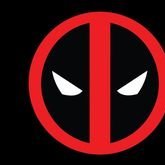
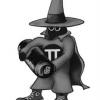

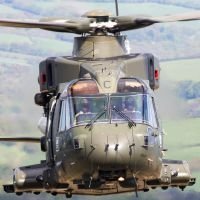
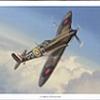
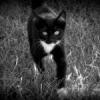
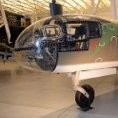



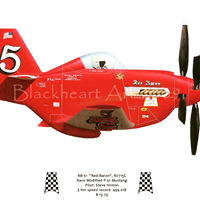




.thumb.jpg.d17ff607fc7e89ed057e63fcb6f2a888.jpg)



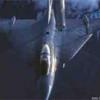
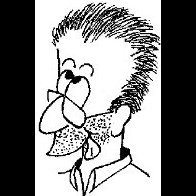




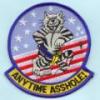
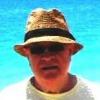

Wedge-TailedEaglePortraitRaptorDomains.thumb.jpg.41a306d3445a68f0f2df773e01776ea6.jpg)
